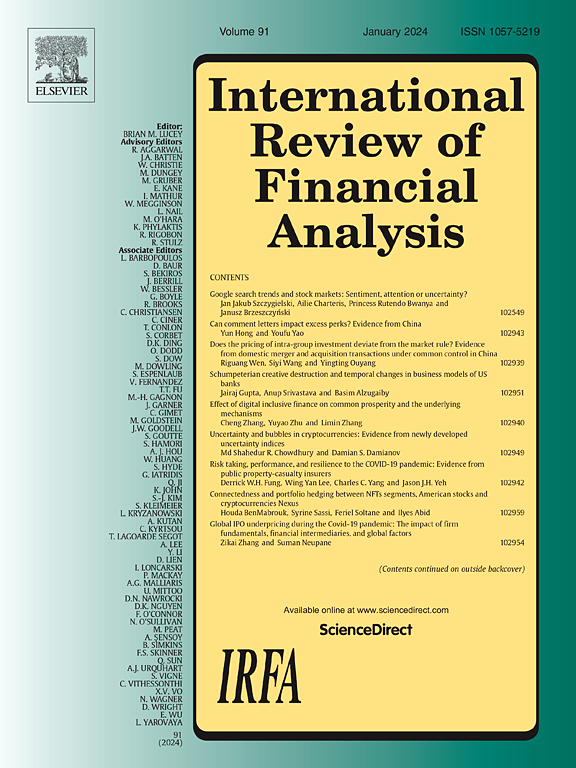Optimal shrinkage of means in the Markowitz model
IF 7.5
1区 经济学
Q1 BUSINESS, FINANCE
引用次数: 0
Abstract
This paper shows that portfolio optimization operates with low volatility in the portfolio weights and out-the-sample Sharpe ratio higher than the rule by shrinking the vector of averages to its grand mean and minimizing the mean square error of the portfolio weights. It is also shown that shrinking the vector of means to its grand mean and minimizing the mean square error of the vector of means can obtain out-of-sample Sharpe ratios that exceed the rule; however, this leads to high values of the portfolio weights’ volatilities. That is because minimizing the mean square error of the portfolio weights also optimizes the estimation error of the model’s decision variables. Therefore, this method can be part of the predict-and-optimize approach. In contrast, minimizing the mean square error of the vector of means involves incorporating the estimated values of the means to calculate the values of the decision variables (portfolio weights). That is, it minimizes the estimation error of the vector of means, not the decision variables. This method can be considered within the estimate-then-optimize approach.
马科维茨模型中均值的最优缩减
本文章由计算机程序翻译,如有差异,请以英文原文为准。
求助全文
约1分钟内获得全文
求助全文
来源期刊

International Review of Financial Analysis
BUSINESS, FINANCE-
CiteScore
10.30
自引率
9.80%
发文量
366
期刊介绍:
The International Review of Financial Analysis (IRFA) is an impartial refereed journal designed to serve as a platform for high-quality financial research. It welcomes a diverse range of financial research topics and maintains an unbiased selection process. While not limited to U.S.-centric subjects, IRFA, as its title suggests, is open to valuable research contributions from around the world.
 求助内容:
求助内容: 应助结果提醒方式:
应助结果提醒方式:


